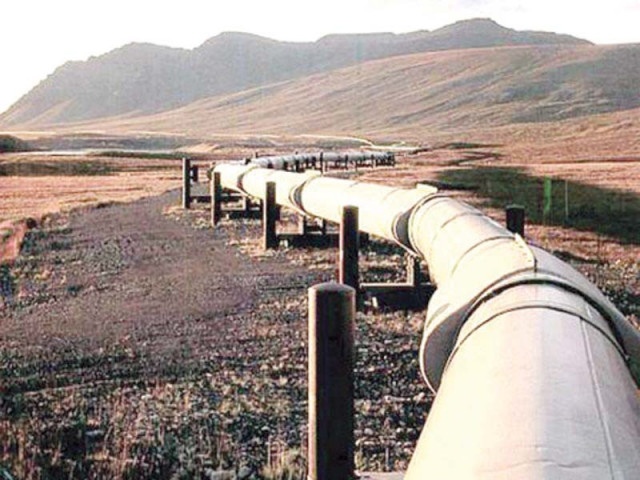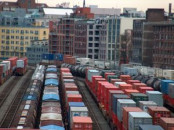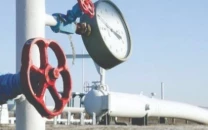SSGC to pour Rs65b into laying new LNG pipeline
Will build pipeline from Karachi to Sawan, finish work by Oct 2018

PHOTO: EXPRESS
The pipeline project is being undertaken ahead of availability of additional imported gas (1.2 billion cubic feet per day - bcfd) after the construction of two new import terminals at Port Qasim, Karachi, by the end of 2018.
Work on TAPI pipeline begins in Pakistan
Sui Southern Gas Company (SSGC) will build the pipeline from Karachi to Sawan whereas Sui Northern Gas Pipelines (SNGPL) will extend it from Sawan to Lahore.
In a notification sent to the Pakistan Stock Exchange on Thursday, SSGC said its board of directors had conceptually approved capital investment of Rs64.99 billion for a 370km pipeline from Karachi to Sawan.
The federal government will finance the project through commercial borrowing.
“Arrangement of financing (is being made) through a long-term loan from the federal government or through commercial borrowing backed by sovereign guarantees of the federal government including the waiving of existing loan covenants from the quarters concerned,” read the notification signed by Company Secretary Shoaib Ahmed.
The Karachi-based company, which supplies natural gas to Sindh and Balochistan, is expected to complete its part of the pipeline by October 2018.
The notification helped take SSGC’s stock price to its 5% upper limit for the day and it closed at Rs37.73 with a volume of 2.55 million shares.
The SSGC board has given the go-ahead to the project subject to approval from the regulator and government authorities including the Oil and Gas Regulatory Authority, Economic Coordination Committee (ECC) and Ministry of Petroleum and Natural Resources.
“The government wants to arrange another 1.2 bcfd for upcoming LNG (liquefied natural gas) terminals, keeping in view the diminishing indigenous gas resources, for meeting the increasing demand from all sectors for which there is an immediate need for the development of 1.2bcfd pipeline capacity from Karachi to Lahore,” the SSGC notification added.
At present, Punjab is receiving 400-600 million cubic feet of imported gas per day (mmcfd) via SSGC and SNGPL pipelines.
LNG is being provided primarily to textile mills, compressed natural gas (CNG) filling stations and fertiliser plants connected to the SNGPL network.
Apart from these, the LNG-based power project of 1,200 megawatts in Sheikhupura, which has begun partial production and supplies, is also getting gas from the network. The project will utilise its full installed capacity by December 2017.
At present, 400-600 mmcfd is being imported through the only import terminal of Engro Corporation.
Gwadar LNG pipeline: Finance ministry supports sovereign guarantees
The second LNG terminal, Pakistan LNG Terminal Limited at Port Qasim, is expected to kick-start operation this year. The Floating Storage and Re-gasification Unit for the terminal, having capacity to handle 600 mmcfd, is scheduled to reach Port Qasim in June 2017. The terminal is being set up by Pakistan GasPort Consortium Limited.
Published in The Express Tribune, April 7th, 2017.
Like Business on Facebook, follow @TribuneBiz on Twitter to stay informed and join in the conversation.



















COMMENTS
Comments are moderated and generally will be posted if they are on-topic and not abusive.
For more information, please see our Comments FAQ